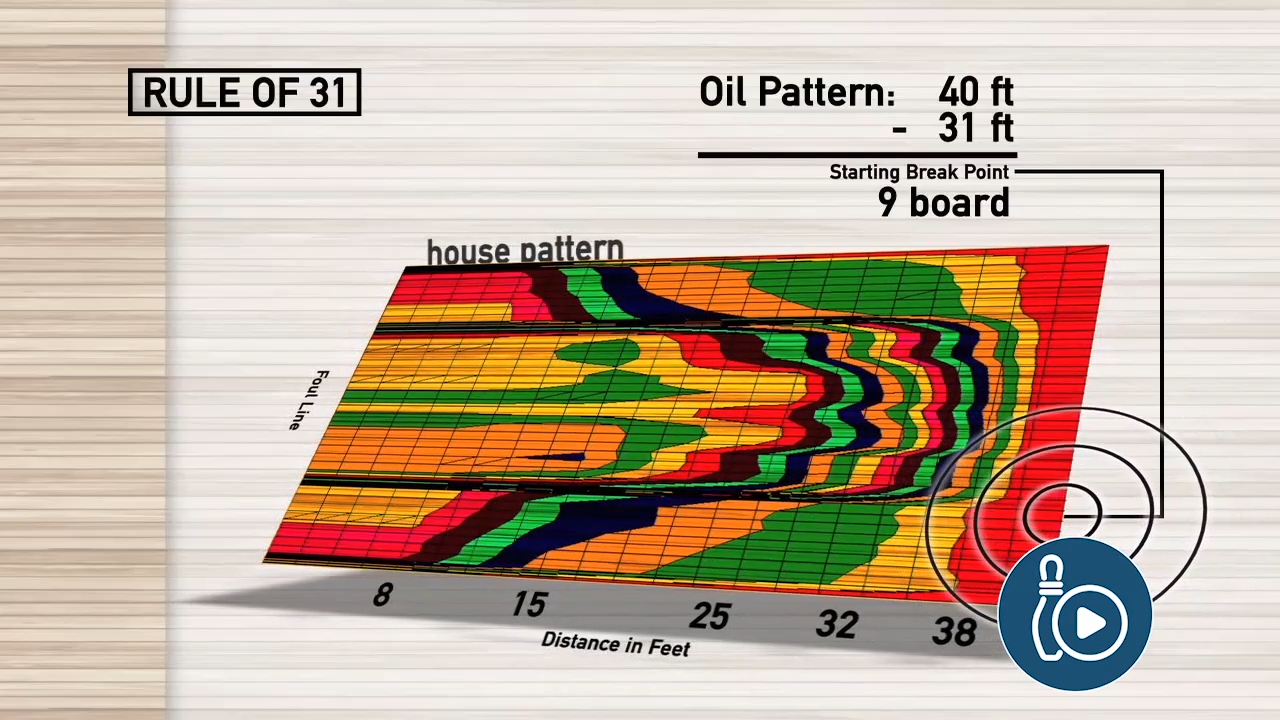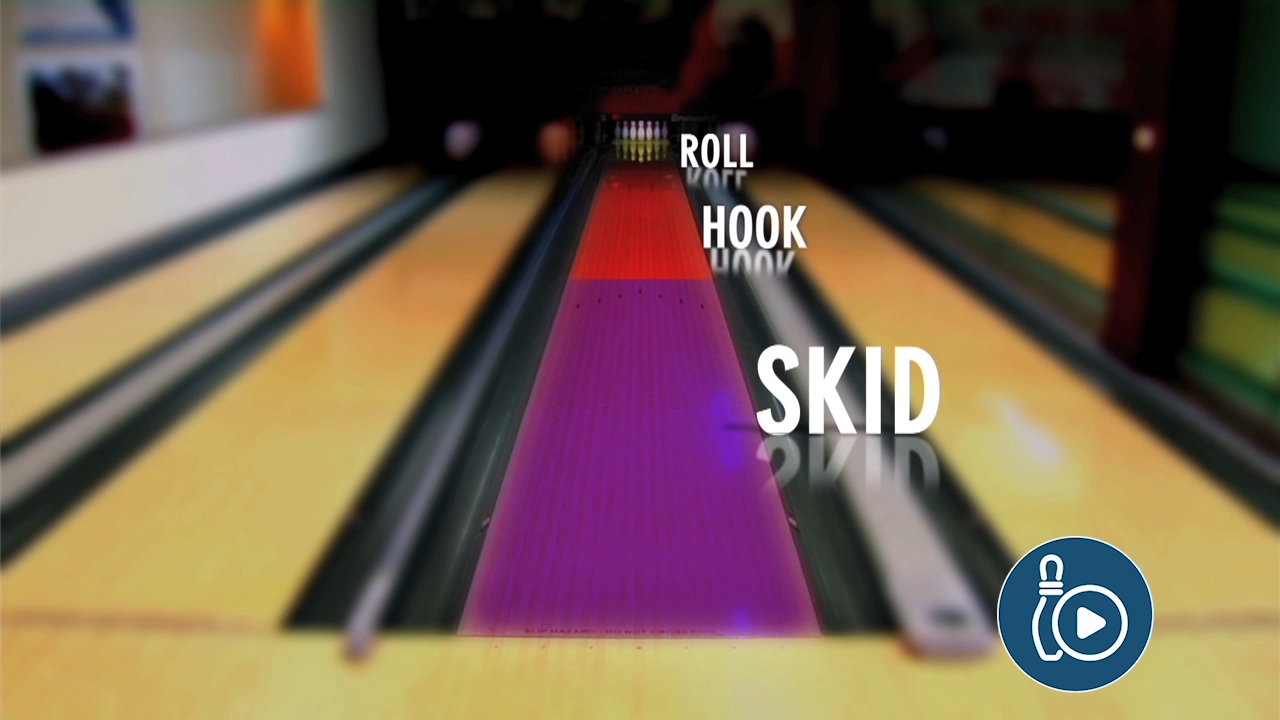Beginner to intermediate bowlers struggle with understanding how to play the lanes, especially when things aren’t going well. By now you’ve found a comfortable place to play on the lanes, but when that doesn’t work it can be overwhelming, leaving you guessing what to do next? Understanding rule of 31 are principles every bowler needs to understand to make adjustments and be successful on the lanes.
Rule of 31
The rule of 31 in bowling is a simple equation that takes the pattern length, subtracts it by the number 31 and leaves you with where the bowling ball should exit the pattern. For example, a house shot that is put out for most leagues is 40 feet long. Take that 40 and subtract it by 31 and you’ll get 9 for the exit point or breakpoint. The number 9 is the board on the lane 40 feet down (pattern length) where the bowling ball will exit the oil pattern and begin to hit friction and hook.

It is important to note that a bowling lane is 60 feet long so if the oil pattern laid down is 40 feet there are 20 feet of bowling lane that has no oil on it initially, with no bowling balls thrown on the pattern. The 20 feet without oil is considered “friction” because where the ball was once sliding on oil on the first 40 feet, the last 20 feet it is grabbing on to the surface of the lane.
A simple analogy for this is to imagine yourself driving on ice, no matter what you do your car will slide because you are on ice. However, once your car exits the ice onto the pavement, it grips the road and you regain control of your car. Knowing the pattern length you are bowling on and the rule of 31 gives you a general idea of where your bowling ball needs to go to get into the pocket.
Ball Motion
There are three phases of ball motion, skid, hook and roll. In order to strike, your bowling ball needs to successfully go through all three phases.

The skid phase occurs from the foul to the arrows. This phase linearly controls the directional path of the ball. The bowling ball is at its fastest speed and has its most axis rotation during this phase.
The hook phase occurs from the arrows to the range finders and this is where you will begin to see the bowling ball change direction.
The roll phase occurs when the bowling ball exits the oil pattern and hits the friction, or dry part of the lane. It is going in a straight line and it is rolling end-over-end. It has lost all of its axis rotation and is traveling at its slowest speed on the lane.
Check out the video below to see the ball in each phase. The color change indicates the change in phases.

The majority of the time you leave corner pins the ball is in the hook phase when it hits the pocket causing the ball to deflect instead of driving through the pocket as it should in the roll phase. This is where ball choice and surface applied to the bowling ball play a significant role in matching up to get more strikes on the lanes. The next time the ball leaves your hand, post your shot, watch your bowling ball’s motion and take that information and decide what adjustment needs to be made to stay competitive.
For a great read and hi-level targeting guide, check out “Understanding 3 Point Targeting” from the Kegel Training Center. Kegels 3 Point Targeting system takes the rule of 31 and the philosophies of ball motion and puts it all together in an easy to follow seven-step process that will have you see the lane in an entirely different way.
Hi I am looking for so practice drill that I can do with are boys varsity team any information would be great
Looks interesting, a good solid practice to implement.
I'm need to bowling , and this is totally fascinating..
<strong>This helps me so much. Thanks to whoever put this together.
I am left handed. My swing at laydown is very close to my slide ankle, about 5 boards. When I play the 7 pin, I will tend to over reach to the target and get the ball out away from my slide ankle. The closer I target to the foul line, the better will be my laydown distance from my foot but I hit the dry track of the right handed head area. If I look down the lane through my target line, I tend to pull the ball inside of target or don't slide squarely over my slide foot. I do a lot of teaching and am a bronze certified coach. What might you suggest for the 7 pin cover?